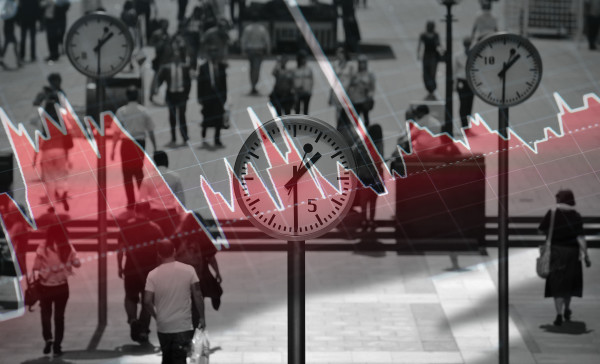

During inflation’s surge last year people asked whether it was a good time to get into value stocks. With inflation broadly expected to fall this year, they will ask whether it is a good time to get out of value stocks.
I give the same answer to both questions: inflation has no discernible effect on the value premium, and that does not matter because most investors will outpace inflation if they remain invested.
The idea of shifting into asset classes as they outperform and dumping them before they underperform is appealing in theory. But countless studies illustrate how hard this is for any individual investor, professional or amateur to do in practice.
This is because security prices quickly incorporate new information and reflect the aggregate expectations of market participants. That includes new information and expectations related to economic factors, like inflation, as well as their potential impact on the future cash flows and discount rates of companies.
Any individual investor is competing against that powerful collective force.
If, as some people suggest, higher inflation signals a positive value premium, we would see a regular pattern in the relation between inflation and the premium.
The chart below shows that relation between the value premium and inflation in the US from 1927 to 2022. If a positive relation existed we would see a linear pattern running from bottom left to top right. All I see is randomly placed dots congregating around a positive average premium.
The way to handle this realisation is to remain consistent with your strategy. Value investors are better off holding their diversified value portfolios through thick and thin. The past couple of years are a good illustration of why.
In the three years to June 2020, US value and growth stocks returned -3.1 per cent and 17.6 per cent respectively, with inflation at around 2 per cent.
In the two-plus years since (July 2020 to December 2022), value has returned 28.7 per cent to growth’s 6.6 per cent, with inflation at an average of around 6 per cent to 7 per cent. Some might look at that coincidence of higher inflation and a strong value premium and search for causation in the correlation.
But this period gives us nothing more than a few dots in a chart with no discernible relation. No one knew when exactly the value premium would turn positive, just as no one knows exactly when it will turn negative. The best approach is to expect it to be positive on any given day and to be well positioned when it is.
If you look more broadly at inflation and global asset returns, you find that if you are clear about your goals in the fight against inflation, even conventional investment strategies can protect you.
We recently studied the returns of 23 US assets in high and low inflation years between 1927 and 2021. Those assets span bonds, stocks, industries, and factor premiums in equities. Over this period, inflation averaged 5.6 per cent per year in high inflation years.
While average real returns were mostly lower in years with high inflation compared to years with low inflation, all assets except one-month Treasury bills had positive average real returns in high inflation years. Overall, outpacing inflation over the long term has been the rule rather than the exception.
Even the assets that people connect to inflation, such as value stocks, commodities, energy stocks and REITs, had no useful relation to inflation. This is because inflation tends to be persistent: when prices are rising fast, they tend to continue doing so for a while before the pace slows.
Asset returns, on the other hand, are unpredictable. So, even if you knew with certainty what inflation will be a year or 10 from now, you know little to nothing about future asset returns.
Our research indicates that market timing is likely a loser’s game. If you are looking for signals that indicate this asset will do better than that asset, you can bet that the market will get there before you and will price it in.
Investors can use this knowledge to their advantage, however, and rely on simple principles like diversification and discipline to influence their investment outcomes.
Mamdouh Medhat is a senior researcher and vice-president at Dimensional Fund Advisors




